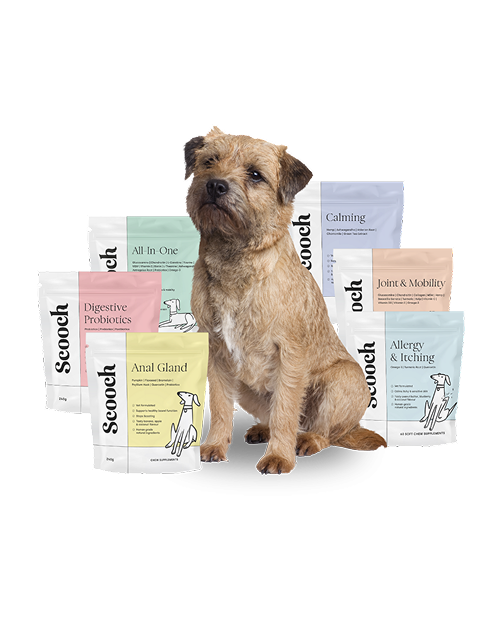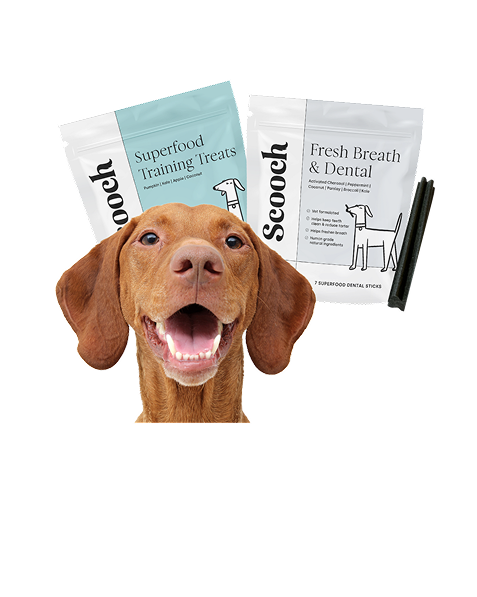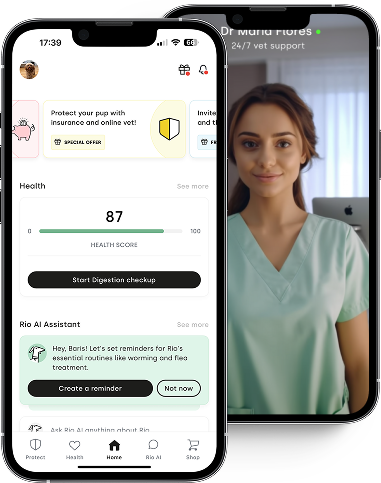
How to Clean Your Dog's Anal Glands: A Step-by-Step Guide
Overview
Have you ever worried about your dog's health? As a caring dog owner, it’s natural to feel concerned about your furry friend’s well-being. The article provides a comprehensive step-by-step guide on how to clean a dog's anal glands, emphasising the importance of proper technique and preparation to ensure your dog's comfort and health.
Moreover, it details essential tools needed for the process, helping you feel prepared and confident. Understanding common issues that may arise during the procedure can alleviate anxiety, allowing you to approach the task with care. Recognising signs of anal gland problems is crucial; by being aware of these signs, you can prevent complications and ensure your dog remains healthy and happy.
In addition, this guide not only informs you but also supports you in taking proactive steps for your pet's health. With the right knowledge, you can tackle this task with compassion and confidence. By following this guide, you are taking an important step in caring for your beloved dog. Remember, your dog's comfort and health are paramount.
Introduction
Understanding the intricacies of a dog's health is crucial for any dedicated pet owner. Have you ever worried about your dog's well-being, especially when it comes to the often-overlooked anal glands? These small scent sacs play a significant role in your dog's overall health, yet many owners remain unaware of the potential issues that can arise from neglecting their care.
This guide offers a comprehensive step-by-step approach to cleaning your dog's anal glands while addressing the common challenges faced during the process. Moreover, what happens when your beloved pet shows signs of discomfort? In addition, how can you ensure your furry friend remains healthy and happy? Together, we can navigate these concerns and ensure your pet's health is prioritised.
Understand the Role of Anal Glands in Dog Health
Have you ever worried about your dog's health? Scent sacs, or rectal pouches, are small compartments located at the 4 and 8 o'clock positions on either side of a dog's posterior. These organs produce a strong-scented liquid that plays a vital role in marking territory and aiding lubrication during defecation. In healthy dogs, scent sacs typically release their contents naturally during bowel movements. However, about 4.4% of canines experience sac disorders, which can lead to complications like impaction or infection, causing discomfort and potential health issues.
Common signs of anal issues include:
- Scooting
- Excessive licking
- Unpleasant odours
Recognising these symptoms is essential for timely intervention, as untreated problems can escalate into more severe conditions. For instance, persistent infections or blockages may necessitate surgical removal of the glands, especially when they significantly impact the dog's quality of life. Understanding how to clean out dogs' anal glands is crucial for dog owners, as it allows them to monitor their pets' health effectively and seek veterinary care when necessary.
Certain breeds, such as Cavalier King Charles Spaniel and Shih-tzu, are more prone to gland issues, highlighting the importance of vigilance for owners of these breeds. As one veterinarian noted, "Lack of fibre in the diet, insufficient exercise, obesity, and anatomical peculiarities can all contribute to inadequate natural expression of the sacs." This underscores the importance of a proper diet and regular physical activity in maintaining the health of these glands.
To support dog owners in enhancing their pet care practises, Scooch offers a variety of veterinary manuals and resources, including specific tips on how to clean out dogs' anal glands for managing gland-related health. Moreover, with our new feature, dog owners can protect their finances while ensuring a worry-free future for their beloved companions.

Gather Essential Tools for Anal Gland Cleaning
As a devoted dog owner, have you ever worried about your furry friend's health? It's natural to want to ensure their well-being, especially during important procedures. To help you feel more prepared and confident, gather these essential tools before you begin:
- Disposable gloves: These will help maintain hygiene and protect you during the process.
- Lubricant: Using something like petroleum jelly can ease the process and make it more comfortable for your dog.
- Paper towels: These are handy for cleanup after the procedure, keeping everything tidy.
- Towel: Place this under your dog to catch any discharge, ensuring they stay clean and comfortable.
- Warm soapy water: This will be useful for cleaning the area afterward, promoting hygiene.
Make sure all these tools are within reach to create a smooth and efficient process. By taking these steps, you’re demonstrating your love and care for your pet, ensuring they receive the best attention possible.

Follow Step-by-Step Instructions for Cleaning
Prepare Your Dog: Have you ever worried about your dog's well-being during a procedure? Begin by ensuring your dog is calm and comfortable. Having a helper to hold your dog still or using treats can help keep them relaxed during the process. Moreover, consider using Scooch's personalised assessment tools, accessible through the Scooch app, to identify any underlying health issues that may affect your dog's comfort.
Wear Gloves: To maintain hygiene and prevent any contamination, put on disposable gloves. This simple step can help ensure a safe experience for both you and your furry friend.
Apply Lubricant: Use a small amount of lubricant on your index finger. This will facilitate the process and minimise discomfort for your dog, making the experience smoother.
Find the Glands: Gently raise your dog's tail and locate the scent sacs positioned at the 4 o'clock and 8 o'clock spots around the rectum. Recognising these glands is crucial for the next step.
Express the Glands: With your thumb and forefinger, gently squeeze the glands towards the anus. You should observe a brownish fluid being expelled. Remember to be gentle to avoid causing any discomfort to your dog. If you're unsure about the technique, consult Scooch's veterinary guides available in the app or ask the Rio AI Assistant for tips.
Clean Up: After the procedure, use paper towels to clean the area thoroughly and dispose of any waste properly. Following this, wash your hands thoroughly to maintain hygiene.
Veterinary knowledge suggests that manual expression is the most prevalent remedy for sac problems, with an average recurrence rate of 35.7% for sac impaction in dogs. Utilising Scooch's health tracking aids can help you oversee your dog's well-being efficiently and alleviate these concerns.

Troubleshoot Common Issues During Cleaning
When expressing your dog's anal glands, you might encounter several common issues that can be concerning. Have you ever worried about your dog's health? Here are some troubleshooting tips to help you navigate these challenges:
-
Dog is Uncooperative: If your dog appears anxious or resistant, it’s best to pause and try again later. Employing treats or calming techniques can help ease their stress and make the process smoother. Consider using Scooch's Calming Chews, which are vet-formulated to support your dog's mental well-being. These tasty, natural chews can help alleviate anxiety, making your dog more cooperative during the process. Moreover, subscribing to Scooch can provide you with ongoing benefits, including discounts and access to our app, which offers £1,000 worth of free accident & injury insurance for your dog, 24/7 video vets, health tracking, and rewards.
-
No Fluid is Expressed: If you find that no fluid is being released, double-check that you are applying sufficient pressure and squeezing both glands effectively. Should the problem continue, it’s advisable to consult your veterinarian for further evaluation.
-
Signs of Discomfort: Should your dog exhibit signs of pain or discomfort during the process, stop immediately. This could suggest an underlying problem that requires professional veterinary attention.
-
Post-Cleaning Care: After expressing the sacs, monitor your dog for any signs of irritation or infection, such as swelling or excessive licking. Maintaining a healthy weight and diet is also important for preventing issues related to the rectal sacs. If you observe any concerning symptoms, seek veterinary advice promptly.
By following these guidelines and considering insights from veterinary sources, you can help ensure a more comfortable experience for your dog while learning how to clean out dogs' anal glands to maintain their health. Additionally, incorporating Scooch's Calming Chews into your routine can provide ongoing support for your dog's anxiety, making grooming and care less stressful. For optimal results, refer to the feeding guide for Scooch's Calming Chews:
- Small dogs (less than 9kgs) should have 1 chew
- Medium dogs (10-18kgs) should have 2 chews
- Large dogs (18-36kgs) should have 3 chews
- Giant dogs (over 36kgs) should have 4 chews
given twice daily.

Conclusion
Understanding the importance of maintaining your dog's anal glands is essential for ensuring their overall health and comfort. Have you ever worried about your dog's well-being? This guide highlights the vital role these glands play in your pet's life and the steps necessary for effective cleaning. By being proactive in this aspect of dog care, you can prevent potential complications, ensuring a healthier and happier life for your furry friend.
Throughout this article, key insights have been shared, including:
- The signs of anal gland issues
- The necessary tools for cleaning
- Step-by-step instructions to follow
Moreover, emphasis was placed on:
- Recognising symptoms early
- Using proper techniques during the cleaning process
- Knowing when to seek veterinary assistance
In addition, the significance of a balanced diet and regular exercise in preventing anal gland problems has been underscored, particularly for breeds predisposed to these issues.
Ultimately, prioritising the health of your dog's anal glands can lead to a more comfortable and enjoyable life for both you and your pet. Taking the time to learn how to clean your dog's anal glands not only fosters a deeper bond with your companion but also empowers you to act swiftly should any issues arise. By incorporating these practises into your routine, you can ensure that your beloved friend remains healthy and content, making pet ownership a truly rewarding experience.
Frequently Asked Questions
What are anal glands in dogs and what is their function?
Anal glands, also known as scent sacs or rectal pouches, are small compartments located at the 4 and 8 o'clock positions on either side of a dog's posterior. They produce a strong-scented liquid that is important for marking territory and aiding lubrication during defecation.
How do anal glands function in healthy dogs?
In healthy dogs, anal glands typically release their contents naturally during bowel movements.
What percentage of dogs experience anal gland disorders?
Approximately 4.4% of canines experience anal gland disorders, which can lead to complications such as impaction or infection.
What are the common signs of anal gland issues in dogs?
Common signs include scooting, excessive licking, and unpleasant odours.
Why is it important to recognise signs of anal gland issues?
Recognising these symptoms is essential for timely intervention, as untreated problems can escalate into more severe conditions, potentially requiring surgical removal of the glands.
Which dog breeds are more prone to anal gland issues?
Breeds such as Cavalier King Charles Spaniel and Shih-tzu are more prone to gland issues, necessitating vigilance from their owners.
What factors can contribute to anal gland problems in dogs?
Factors include lack of fibre in the diet, insufficient exercise, obesity, and anatomical peculiarities that can affect the natural expression of the glands.
How can dog owners maintain their dog's anal gland health?
Maintaining a proper diet and ensuring regular physical activity are important for the health of a dog's anal glands.
What resources does Scooch offer to dog owners regarding anal gland care?
Scooch offers veterinary manuals and resources, including specific tips on how to clean out dogs' anal glands to help manage gland-related health issues.
List of Sources
- Understand the Role of Anal Glands in Dog Health
- Ground-breaking RVC research explores prevalence of anal sac disorders in dogs (https://rvc.ac.uk/vetcompass/news/ground-breaking-rvc-research-explores-prevalence-of-anal-sac-disorders-in-dogs)
- Anal Glands In Dogs: Guide to Best Anal Gland Health (https://bonza.dog/2024/04/anal-glands-in-dogs-guide-to-best-anal-gland-health?srsltid=AfmBOoqB6aR5TfBwXrpr8yy85maDhgDpXqbmoQdlDIJQR4JDoIM8TDyP)
- Follow Step-by-Step Instructions for Cleaning
- A Cross-Sectional Study on Canine and Feline Anal Sac Disease - PMC (https://pmc.ncbi.nlm.nih.gov/articles/PMC8749694)
- Troubleshoot Common Issues During Cleaning
- Dog Anal Glands: Common Problems, Treatment, and Prevention (https://petmd.com/dog/general-health/dog-anal-glands)
- Blocked anal glands in dogs (https://pdsa.org.uk/pet-help-and-advice/pet-health-hub/conditions/blocked-anal-glands-in-dogs)
- Blocked anal glands in dogs (https://animaltrust.org.uk/pet-health-advice-hub/blocked-anal-glands-in-dogs)
- A Cross-Sectional Study on Canine and Feline Anal Sac Disease - PMC (https://pmc.ncbi.nlm.nih.gov/articles/PMC8749694)




 Scooch health
Scooch health